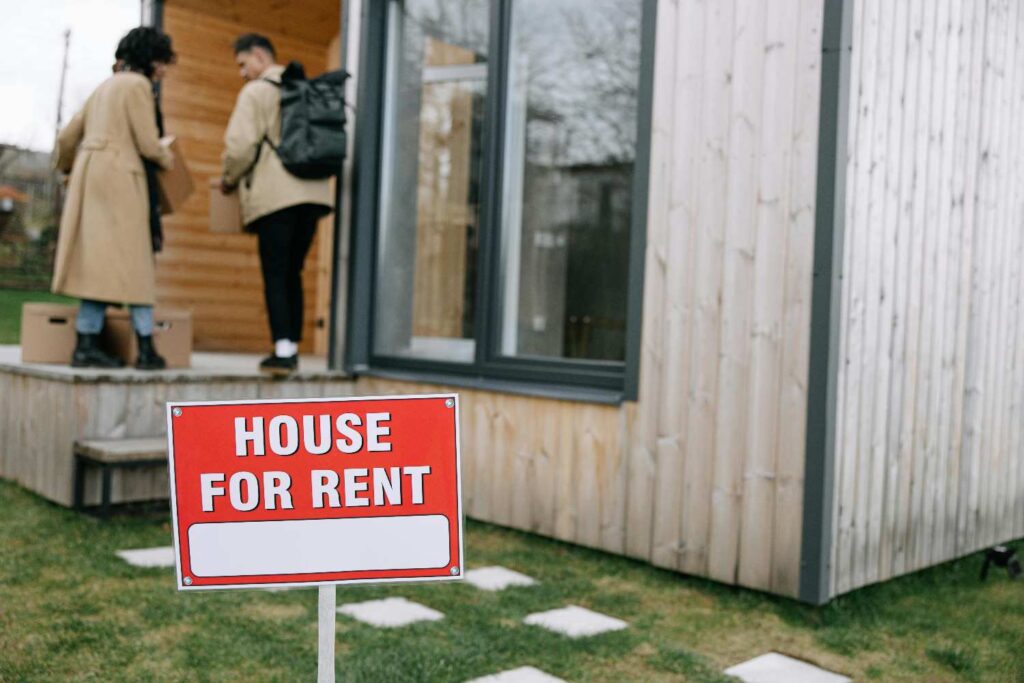Short-Term vs. Long-Term Rentals: It’s a debate that real estate investors have had from the dawn of Airbnb. This guide will help you decide which is right for you.
Whether you’re just dipping your toes into the rental property market or you’re looking to expand your existing portfolio, one crucial decision stands between you and your real estate goals: Should you go with short-term rentals (STRs) or long-term rentals (LTRs)?
We’re taking a comprehensive look at both strategies, considering income potential, risk factors, management requirements, and financing options. It’s time to challenge preconceived notions about rental property investing and explore approaches that better serve today’s investors.
The traditional approach to real estate investing doesn’t always align with the needs of today’s diverse investors and their unique financial situations. The conventional one-size-fits-all strategy often fails to address individual investment goals and circumstances. We exist to provide financing options for a variety of borrowers, not just the ones who fit conventional standards.
With that said, let’s get into the guide:
Short-Term Rentals: Higher Income Potential, More Involvement
What Exactly Are Short-Term Rentals?
Short-term rentals are properties rented for days or weeks at a time, typically through platforms like Airbnb and Vrbo. Think vacation homes, weekend getaways, and business travel accommodations. These properties can generate significant income but also require more active management than their long-term counterparts.
The Upside of STRs
Higher Revenue Potential
The numbers don’t lie – short-term rentals can generate 2-3 times the revenue of long-term rentals in high-demand areas. On average, however, the difference is not quite as pronounced. Most industry reports claim that short-term rental revenue beats long-term rental revenue by about 30-40%.
By charging nightly rates rather than monthly rent, though, you can maximize your property’s earning potential, especially during peak seasons and special events.
- If a long-term lease would be $2,500 per month, the same property as a short-term rental might gross $5,000 or more in peak months.
- On average, short-term rental hosts see significantly higher income – one analysis found long-term leases bring in ~40% less rental income than short-term stays for the same property.
- According to a Forbes industry report, short-term rentals can yield about 30% higher profits compared to traditional renting.
Unmatched Flexibility
With short-term rentals, you’re in the driver’s seat. You can adjust your pricing based on local demand, block off dates for personal use, and make property updates whenever there’s a gap between bookings.
Tax Advantages
Short-term rentals often qualify for more business deductions than long-term rentals. From furnishings and supplies to cleaning services and property management fees, these expenses can significantly reduce your taxable income.
Diversified Tenant Base
Instead of relying on a single tenant for your entire income stream, short-term rentals spread the risk across multiple guests. If one cancels or leaves a bad review, it won’t impact your entire operation.
If you’re thinking about getting in on the short-term rental game, check out our article on DSCR loans for Airbnbs and short-term rentals.

The Challenges of STRs
Higher Operating Costs
More turnovers mean more cleaning, more maintenance, and more furnishing expenses. Plus, you’ll need to stock essentials like toilet paper, soap, and coffee for each new guest.
Regulatory Considerations
Local regulations can change rapidly. Many cities are implementing new policies on short-term rentals, including permits, occupancy taxes, or restrictions. Always research the local rules before investing.
Seasonal Fluctuations
Unless you’re in a year-round destination, prepare for seasonal variations in demand. Your beachfront property might be booked solid in summer but experience lower occupancy during winter months.
Hands-On Management
Short-term rentals require active management. You’ll be handling guest communications, marketing your property, coordinating cleanings, and addressing maintenance issues – or paying a professional to manage these responsibilities.
This is part of the reason why the disparity between average Airbnb host incomes and top host incomes is so great: The average Airbnb host earns around $1,000 per month while the top hosts earn as much as $20,000-$40,000 a month for a single property. When it comes to comparing short-term vs. long-term rentals, this is a key point that many investors overlook.
Long-Term Rentals: Stability and Predictability
What Makes Something a Long-Term Rental?
In order to compare short-term vs. long-term rentals, we first have to decide exactly what a STR or LTR even is. Long-term rentals (LTRs) are properties leased for six months, a year, or even longer. These traditional rental arrangements provide consistent income without the daily management requirements of short-term rentals. STRs are leased out for shorter periods of time: days, weeks, or months.
The Upside of LTRs
Stable, Predictable Income
With long-term rentals, you know exactly how much money is coming in each month. No guessing, no seasonal fluctuations – just reliable rent checks you can count on.
Occupancy for short-term rentals tends to be lower on average and highly seasonal. Nationally, U.S. vacation rentals hover around 55–60% average occupancy over a year. In 2021 the average was about 60%, dipping to ~56% by 2023 as more listings came on the market. This means an Airbnb might be booked roughly 17 days out of a 30-day month on average. Peak season can see much higher occupancy – hosts often enjoy fully booked calendars during holidays or summer in vacation destinations, then encounter slow periods in the off-season.
With long-term leases, you don’t have the same issue.
Lower Operating Expenses
Fewer turnovers mean less wear and tear, lower cleaning costs, and reduced marketing expenses. Plus, tenants typically handle utilities and minor maintenance tasks themselves.
Easier Financing Options
Lenders appreciate stability, which makes long-term rentals easier to finance. The predictable cash flow of a 12-month lease is favorable from a mortgage underwriter’s perspective.
Less Active Management
Once you’ve placed a quality tenant, your day-to-day involvement decreases significantly. Your property management duties become less frequent and more scheduled.
Higher Occupancy Rates
Long-term rentals exhibit much higher occupancy rates, since tenants typically sign 6- or 12-month leases. The unit may only be vacant for short transition periods between tenants. As of February 5, 2025, the US rental vacancy rate is 6.9%, and the homeowner vacancy rate is 1.1%. This is very close to all-time-lows.
The Challenges of LTRs
Lower Income Ceiling
Long-term rentals typically cannot match the revenue potential of short-term rentals in high-demand areas. You’re trading higher profits for stability and ease of management.
Tenant Risks
Relying on a single tenant increases certain risks. Late payments, property damage, or eviction proceedings can significantly impact your investment performance.
Limited Flexibility
Once you’ve signed a lease, you’re committed to those terms. You cannot adjust rates for high-demand periods, use the property yourself, or quickly adapt if market conditions change.
Minimal Personal Use
Using your investment property for personal purposes becomes challenging with long-term tenants in place. This limitation should be factored into your investment strategy if personal use is important to you.
Which Rental Strategy Fits Your Investment Style?
When it comes to deciding between short-term vs. long-term rentals, the “right” strategy isn’t one-size-fits-all – it depends on your financial goals, risk tolerance, and how hands-on you want to be.
Consider Short-Term Rentals If:
- You’re aiming for maximum cash flow
- You have time for active management (or budget for a property manager)
- Your property is in a tourist destination or high-demand area
- You want the flexibility to use the property yourself occasionally
- You’re comfortable with some income volatility
Consider Long-Term Rentals If:
- Stability and predictability are your top priorities
- You prefer a more passive investment approach
- Your property is in a residential neighborhood with strong rental demand
- You want easier financing options
- You’re looking to minimize your day-to-day involvement
The Hybrid Approach
Some savvy investors take a seasonal approach, using their properties as short-term rentals during peak tourist seasons and switching to medium-term rentals (1-6 months) during the off-season. This strategy maximizes income during high-demand periods while providing stability during slower months.
Location, Location, Location
Your property’s location has a massive impact on which strategy will work best:
- Urban centers with strict regulations: Long-term rentals may be your only legal option
- Tourist destinations: Short-term rentals can generate exceptional returns
- College towns: Academic calendar-based rentals (9-month leases) might be ideal
- Business districts: Corporate housing (1-3 month stays) could be your sweet spot
- Vacation hubs: Areas where people are going to relax and unwind – could be near a body of water like the ocean, a lake or somewhere warm with a pool
Financing Your Rental Property with Defy Mortgage

Whatever rental strategy you choose, securing the right loan is crucial to your success. At Defy Mortgage, we understand that traditional lending doesn’t always align with the unique needs of today’s real estate investors.
DSCR Loans: Financing Based on Property Performance
Debt Service Coverage Ratio (DSCR) loans allow you to qualify based on the property’s income potential rather than your personal income. This means:
- No tax returns or employment verification required
- Qualification based on the property’s ability to generate rental income
- Higher loan amounts for high-performing properties
- Ideal for both short-term and long-term rental strategies
Non-QM Loan Options for Real Estate Investors
Our non-QM (non-qualified mortgage) loan programs are designed for investors who don’t fit the conventional lending box:
- Flexible income documentation
- Options for self-employed investors
- Solutions for those with recent credit events
- Competitive rates and terms for investment properties
The Bottom Line: There’s No “Right” Answer
So, what’s the answer to short-term vs. long-term rentals? Short-term rentals offer higher income potential but require more effort and come with more variables. Long-term rentals provide stability and require less day-to-day management but cap your earning potential.
The best strategy is the one that aligns with your investment goals, lifestyle preferences, and the specific characteristics of your property. And the best loan? It’s the one tailored to your unique situation.
At Defy Mortgage, we take a full 360-degree look at your finances, goals, and background – not just judging you by some standard checklist. We factor in all aspects to craft mortgage options that actually fit your investment strategy.
Ready to explore your rental property financing options? Contact our team today to learn more about our DSCR loans and non-QM solutions for real estate investors.
FAQs: Short-Term vs. Long-Term Rentals
Which rental strategy is more profitable? Short-term rentals typically generate higher gross income than long-term rentals—sometimes 2-3 times as much in high-demand areas. However, they also come with higher expenses and more market risks. Your net profit will depend on your location, property type, and management approach.
What type of loan is best for financing a rental property? DSCR loans are often ideal for rental property investors because they allow you to qualify based on the property’s income potential rather than your personal income. This is especially valuable for investors with multiple properties or self-employed individuals.
Are short-term rentals riskier than long-term rentals? Yes, short-term rentals generally carry more risk due to regulatory changes, seasonality, and higher operating costs. However, they also mitigate certain risks by diversifying your tenant base and allowing for more flexible pricing strategies.
Can I switch between short-term and long-term rental strategies? Yes, many investors use a hybrid approach, especially in seasonal markets. However, be aware that zoning laws, HOA rules, and your loan terms may impact your flexibility. Some loan programs have occupancy restrictions that could affect your ability to switch strategies.
Do lenders have different requirements for financing short-term vs. long-term rentals? Yes, financing for short-term rentals can be more complex since many traditional lenders prefer the predictability of long-term leases. That’s where Defy Mortgage comes in – our flexible options like DSCR loans consider the total income potential of your property, making them suitable for both short-term and long-term rental strategies.
How do taxes differ between short-term and long-term rentals? Short-term rentals are often considered active income and may be subject to self-employment taxes, while long-term rentals are typically classified as passive income. Both can benefit from depreciation, but short-term rentals may allow for more business deductions. Always consult with a tax professional to optimize your investment strategy
What are the best locations to purchase a short-term rental? Florida and Texas are prime STR markets due to their no state income tax status, which improves NOI and strengthens DSCR ratios. Hawaii offers premium nightly rates despite higher entry costs. Other strong options include mountain destinations (Colorado), coastal areas, and cities with year-round tourist appeal, but always verify local regulations before investing.
What are the best locations to purchase a long-term rental? Growing metropolitan areas in the Southeast and Southwest (Atlanta, Nashville, Phoenix) offer affordable prices with strong rental demand. Midwestern cities (Columbus, Indianapolis) provide stable returns with lower entry costs. When evaluating LTR locations, prioritize areas with job growth, diverse economies, and positive rent-to-price ratios.




